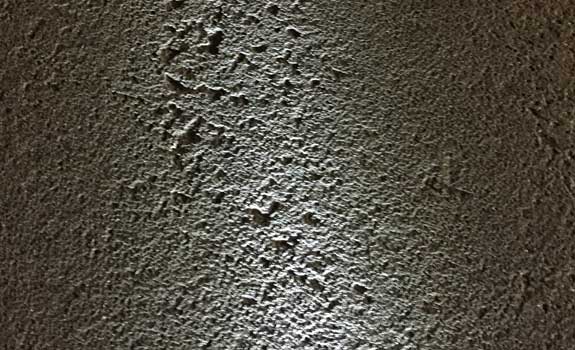CASE STUDY
Archco Seals Heavily Pitted Tank Floor from Ring Out with Holidays
Industrial Coatings & Linings
Project Data
| Location | Houston, TX |
| Completion | 2017 |
| Project Type | Seal Heavily Pitted Floor from Ring Out with Holidays. |
| Products Used | Archco™ 401 |
| Contractor or Applied By | N/A |
Project Details
A major pipeline company was having problems insuring that the tank coating on their storage tanks would fill in the heavy pits, and prevent the lining from ringing out during the holiday test, part of the inspection for acceptance. They were experiencing as much as 200 ring outs during the spark test. According to their specification, each holiday had to be addressed and the tank floor retested for holidays. The problem with the coating system that they were using was the primer was too viscus and it would not wet out the heavily deep pitted steel.
By using the 401 sealer, designed to have low viscosity, the coating would penetrate into the pit, and completely seal and fill the pit. Most viscus primers have a tendency to bridge over the pit. The trapped air in the pit keeps the coating from penetrating down to the bottom, and from sealing the pit. If the coating does not allow the air bubble to escape the pit, then the air is sealed over, which in turn allows the voltage of the holiday detector to penetrate through the coating film to the void and ring out as a holiday. The major concern with the bottom of the pits not being sealed is when the tank is put back into service, moisture in the tank will permeate the coating film and fill the bottom with moisture, which in turn, creates a corrosion cell and penetrates through the steel plate, creating a leak. The 401 with the top coat will seal the steel surface, not allowing vapor to penetrate into the void and create a corrosion cell.
The only draw back in using 401 is that it is sealer. A sealer is designed to seep deeply into every nook and cranny of the pit, to seal it off. Because it is a sealer, it is designed to be slow cure. At 50ªF, the 401 will take at least 24 hours from the time it is sprayed to cure. The lower the steel temp, the slower to cure, the higher the steel temp, the faster to cure. It is not designed to be applied under 40ªF. To help the cure rate, allow at least a 15 min sweat in (induction time) at 75ªF. Then apply the 401 at 4 to 5 mils DFT. It is 100% solid, so adding forced air will not speed it up the cure time, only heat will accomplish that. When estimating the lining project, take into consideration that the 401 will take at least an extra 6 hours to cure to walk on at 70ªF.

Heavy pitted floor.

Heavy pitted floor with Archco 401 sealer.

Heavy pitted floor with 401/476 pinhole free.

Heavy pitted floor.

Heavy pitted floor with Archco 401 sealer.



